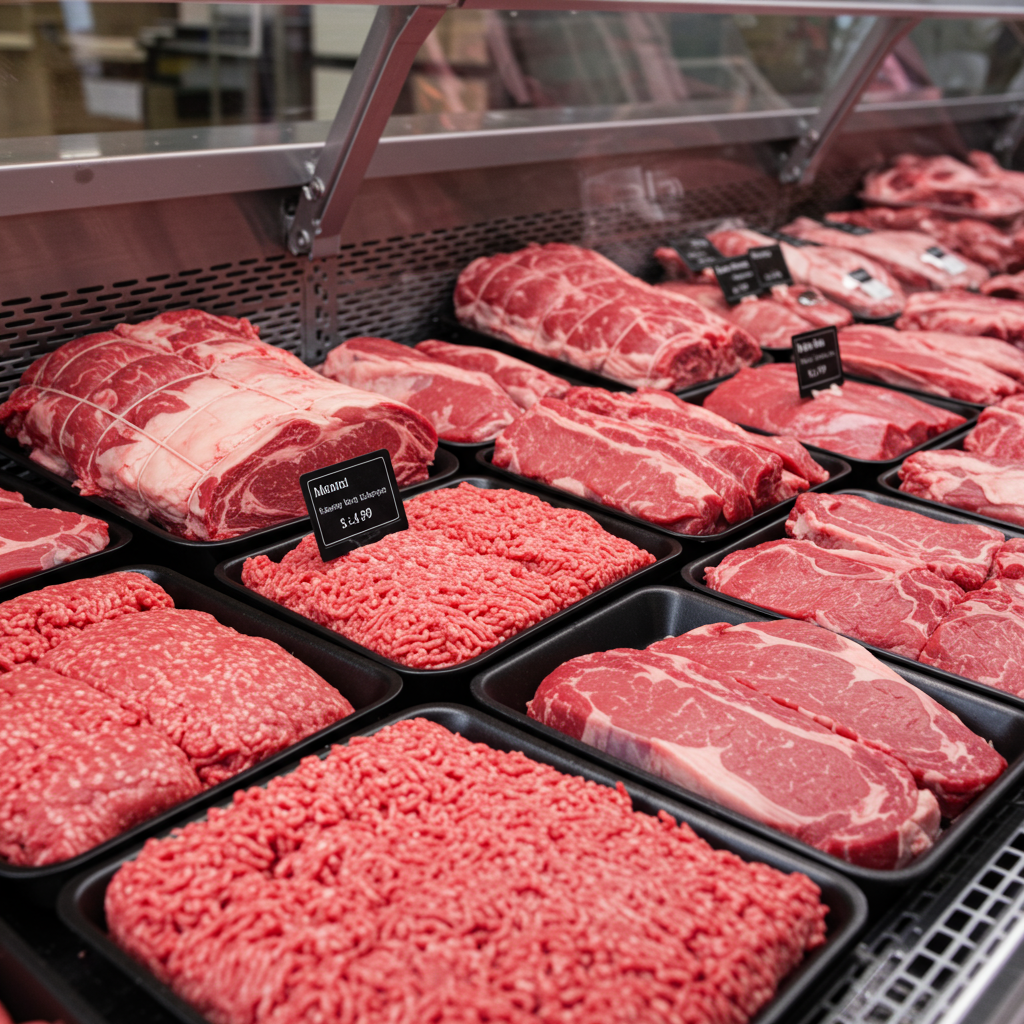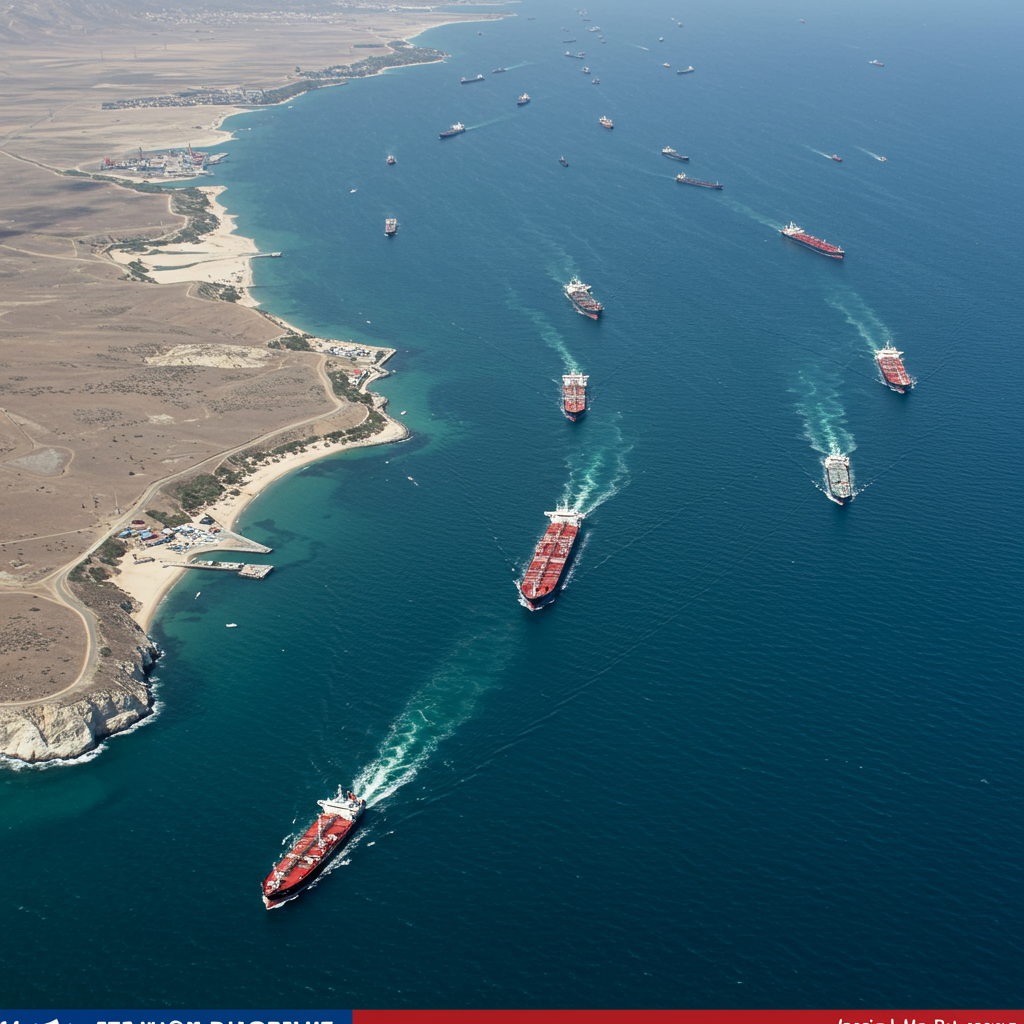Are your eyes watering at the cost of steak or ground beef lately? You are certainly not alone. Across the United States, consumers face significantly higher prices for beef products compared to previous years. This isn’t a simple market blip; it’s the complex result of a critically low supply of cattle meeting persistent, strong consumer demand. Understanding these core economic drivers helps explain why your grocery budget feels the pinch. Let’s delve into the factors pushing beef prices upward and what the future might hold.
The Deep Decline in U.S. Cattle Supply
The primary force behind today’s elevated beef prices is a sharp reduction in the national cattle inventory. Data confirms that the U.S. cattle herd is at its smallest size in decades. Various reports pinpoint this low point, some stating it’s the lowest since 1951, while others note it as the tightest supply seen since 2014. Regardless of the exact historical marker, the consensus is clear: fewer cattle are available for processing than in generations. This tight supply creates upward pressure on prices throughout the entire beef pipeline.
Ranchers Face Unprecedented Cost Pressures
Raising cattle has become dramatically more expensive for producers across the country. Farmers are grappling with substantial increases in the costs of essential agricultural inputs. Items vital for herd health and growth, like feed grains, fertilizers, and pesticides, have seen significant price hikes. One producer in Pittsylvania County, Virginia, reported input costs climbing anywhere from 30% to 35%, or even more for specific necessities. These expenses are often non-negotiable; ranchers cannot drastically cut back on inputs crucial for successfully raising healthy animals.
Drought Worsens Financial Strain
Adding to these financial burdens, severe drought conditions have impacted key cattle-producing regions, including the Great Plains. Drought-parched pastures mean natural forage is scarce. This forces ranchers to purchase expensive supplemental feed, further eroding already thin profit margins and increasing operational costs dramatically. Faced with the dual challenge of soaring input expenses and the high cost of feed due to dry conditions, many cattle farmers have made the difficult, often heartbreaking, decision to reduce their herd sizes. Some producers have even been compelled to exit the business entirely.
Rebuilding the Herd: A Slow and Costly Process
Increasing cattle numbers is not a quick fix. Rebuilding the national herd is an inherently slow, biological process that unfolds over years. From the time a calf is born until it reaches market weight, it takes roughly 18 to 24 months. Even with current high prices potentially incentivizing expansion, producers face significant hurdles. Keeping female cows (heifers) for breeding purposes instead of selling them for immediate high income means foregoing substantial short-term revenue. This requires considerable upfront investment at a time when borrowing money is more expensive due to rising interest rates. Uncertainty from factors like shifting trade policies and tariffs also makes ranchers hesitant to commit to large, long-term investments required for significant herd expansion. Experts suggest it could take three or four years before retaining heifers leads to a noticeable increase in market production, with some predicting market stabilization potentially not occurring until late 2026.
Demand Remains Remarkably Robust
Ordinarily, when prices for a product climb significantly, consumers tend to reduce their purchases or seek cheaper alternatives. While some consumers are undoubtedly adapting their buying habits, demand for beef has remained surprisingly strong. Some ranchers describe current demand as being among the strongest in history. Beef continues to be viewed globally and domestically as a highly desirable protein choice.
Consumers’ Willingness to Pay
Despite the steep costs, consumers are still purchasing beef, though potentially in different cuts or quantities. This sustained willingness to pay higher prices is a major factor underpinning the current market situation. For instance, the average price for a pound of ground beef hit a record high of $5.98 in May, according to reports, marking a significant increase compared to the previous year. USDA forecasts anticipate domestic beef consumption to remain relatively stable through 2025, with only minor decreases projected. While consumer confidence has shown some decline, historically it correlates with household financial health and could pose a future risk to demand if it continues to fall amidst high prices and inflation that has outpaced general costs.
The Vital Role of Export Markets
Beef exports represent a crucial component of overall demand, adding significant value to various cuts. The United States is a major beef exporter, with key markets including South Korea, Japan, China, Mexico, and Canada. While overall export sales have seen some slowdown recently compared to peak periods, demand from important partners like South Korea and Canada remains strong. However, factors such as tariffs, particularly on exports to countries like China, can create headwinds, slightly dampening overall foreign demand for specific beef cuts. Conversely, tariffs on imports can also affect domestic prices.
Indicators Reflecting Market Dynamics
Market analysts use several metrics to gauge the strength of beef demand and supply. One key indicator is the price difference between premium Choice cuts and leaner Select cuts; a wider spread typically suggests robust consumer demand for higher-quality beef. Another measure is the quantity of beef held in cold storage. If cold storage levels are declining, it can indicate that demand is efficiently absorbing available supply. Recent data showed cold storage levels slightly above the previous year but still below the five-year average and down from the prior month, potentially reflecting both reduced production and ongoing demand.
The Ripple Effect at the Grocery Store
The combination of limited supply and strong demand flows through the entire beef supply chain, ultimately affecting the price consumers see at the checkout counter. Meatpackers pay more for the limited number of cattle available from producers, potentially squeezing their margins. These increased costs are then passed down the line to retailers and, finally, to shoppers.
Retailers Navigate Rising Costs
Grocery stores are certainly feeling the pressure from higher wholesale beef prices. Meat department managers acknowledge the rising costs from their suppliers but often seek strategies to minimize the impact on customers. This can involve absorbing some of the price increases themselves where feasible or focusing on sourcing meat locally, which might help mitigate national price trends depending on regional supply conditions. For example, a meat manager at a local Piggly Wiggly noted ground beef prices were around $4.00 per pound, lower than national averages reported elsewhere, potentially reflecting successful local sourcing or efforts to keep prices competitive.
Seasonal Demand Adds Price Sensitivity
Periods of naturally higher consumer demand, such as the peak summer grilling season leading up to holidays like the Fourth of July, can intensify price pressure. While the underlying cause of high prices is the fundamental supply/demand imbalance, these seasonal spikes can push prices even higher, especially if local stores rely on supply chains experiencing the nationwide crunch. The source of beef for your local grocery store can significantly influence the final price you see in the meat aisle.
Beyond Supply and Demand: Compounding Factors
While the supply shortage and strong demand are the main drivers, several other factors contribute to the current high cost of beef. General inflation across the economy increases the price of almost everything involved in production, from the fuel needed for transport to the labor costs at every stage of the chain. Rising interest rates make it more expensive for ranchers and other businesses in the supply chain to secure the loans needed for operations, maintenance, or expansion projects. Additionally, new tariffs imposed on beef imported from countries like Brazil, Australia, and New Zealand can raise the cost of foreign meat entering the U.S., which is sometimes used to supplement domestic supply, particularly for items like lean trimmings used in ground beef. (Beef from Mexico and Canada is exempt under the USMCA agreement).
The current market dynamics differ notably from the challenges observed during certain periods of the COVID-19 pandemic. During parts of 2020, temporary shutdowns at processing plants created bottlenecks. This situation led to paradoxically low prices for producers (who couldn’t get cattle processed) while retail prices remained high due to limited supply at the consumer level. Today, producers are generally receiving record high prices for their cattle due to scarcity, while processors may experience tighter margins due to the high cost of acquiring that limited supply.
The Outlook: Will Beef Prices Fall?
With U.S. cattle numbers at multi-decade lows and the biological process of herd rebuilding taking years, beef supply is expected to remain constrained for the foreseeable future. Although robust consumer demand currently supports prices, it is also vulnerable to shifts in the broader economy. A significant economic downturn or rising unemployment could impact consumer spending power, potentially weakening demand for premium proteins like beef.
Adding to the uncertainty are ongoing trade policies and tariffs. These can affect both the cost of importing beef (influencing prices for products like ground beef) and the viability of exporting U.S. beef (impacting overall demand). This unpredictable environment does not necessarily encourage the substantial, long-term investment required for rapid herd expansion. Therefore, the combination of tight supply, resilient demand, and external economic factors suggests that consumers should likely anticipate beef prices remaining elevated for a considerable period.
Frequently Asked Questions
Why is the U.S. cattle supply the lowest it’s been in decades?
The U.S. cattle supply has reached multi-decade lows primarily due to economic hardships faced by ranchers. Soaring costs for essential inputs like feed, fertilizer, and fuel, coupled with severe drought conditions requiring expensive supplemental feed, have significantly increased the cost and difficulty of raising cattle. These combined pressures have made the business less profitable for many, leading producers to reduce their herd sizes or exit the industry entirely, resulting in a substantially lower number of cattle available nationwide.
How are local grocery stores managing the impact of high beef prices on consumers?
Local grocery stores are experiencing higher wholesale costs for beef passed down from meatpackers. To help manage this for customers, retailers often employ strategies like attempting to absorb a portion of the price increases themselves rather than passing on the full cost. They may also focus on sourcing meat locally when possible, which can sometimes provide a more stable or lower cost supply depending on regional conditions, as exemplified by the Piggly Wiggly manager mentioned in the article. While they cannot eliminate price hikes entirely, these efforts aim to mitigate the impact on shoppers.
When might consumers expect beef prices to decrease significantly?
Based on current market conditions, a substantial decrease in beef prices is not anticipated in the short term. Rebuilding the U.S. cattle herd takes years due to the biological cycle, typically 18-24 months from birth to market weight. While high prices offer an incentive to expand, the process is slow, costly, and faces hurdles like high interest rates and uncertainty. Experts suggest it could take 3-4 years or longer for increased herd numbers to impact market supply significantly, with some predicting potential price stabilization closer to late 2026. Until supply recovers substantially or demand weakens considerably (potentially due to economic factors), prices are likely to remain elevated.



